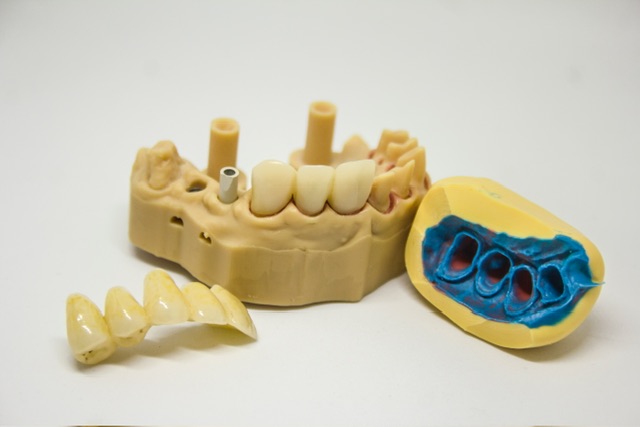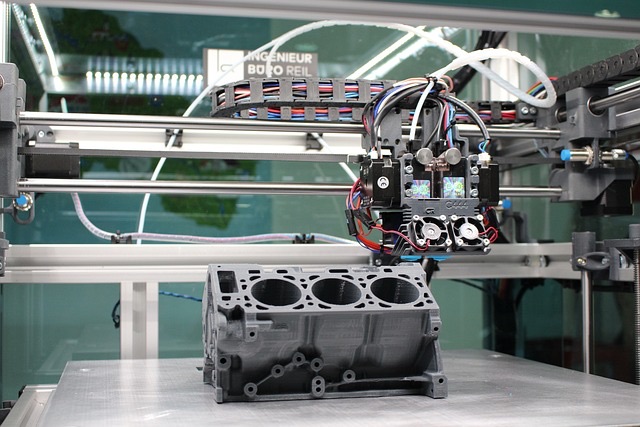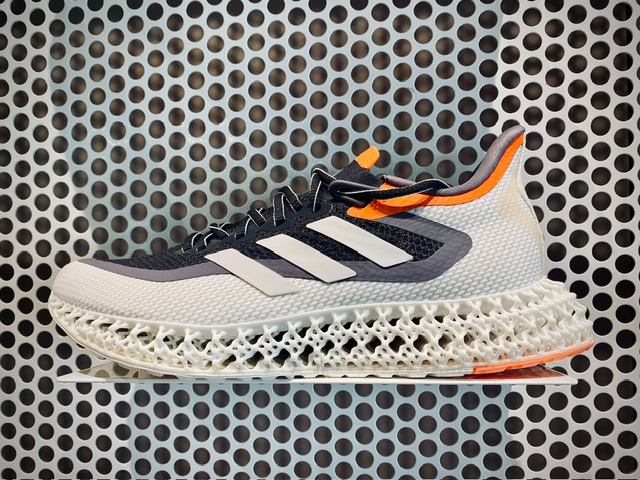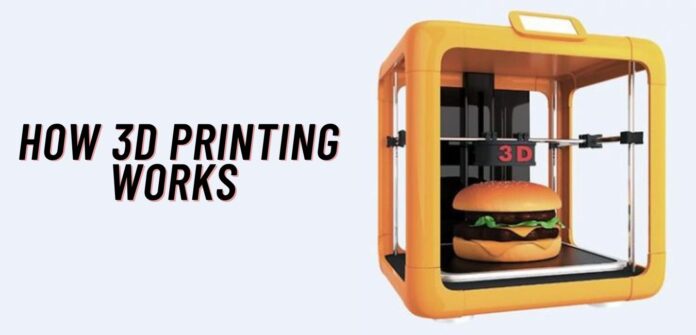Fundamental Concepts of 3D Printing
3D printing, also known as additive manufacturing, is a process of creating three-dimensional objects from digital models. The process involves adding layer upon layer of material until the desired object is formed. Here are some fundamental concepts of 3D printing:
1. Digital Design
The first step in 3D printing is to create a digital model of the object to be printed. This can be done using computer-aided design (CAD) software or by scanning an existing object with a 3D scanner. The digital model is then saved in a standard file format, such as STL or OBJ.
2. Slicing
Once the digital model is created, it needs to be sliced into thin layers. This is done using slicing software, which takes the digital model and divides it into hundreds or thousands of horizontal layers. The thickness of each layer depends on the printer and the desired resolution of the final object.
3. Printing
The 3D printer then reads the sliced file and begins printing the object layer by layer. The printer lays down material, such as plastic, metal, or resin, one layer at a time until the object is complete. The material used depends on the type of printer and the desired properties of the final object.
4. Post-Processing
Once the object is printed, it may require post-processing to achieve the desired finish or properties. This can include sanding, painting, or applying a coating to improve the surface quality. Some materials may also require curing or heat treatment to achieve their final properties.
Overall, 3D printing is a versatile and rapidly evolving technology that has numerous applications in manufacturing, healthcare, and other industries. With the ability to create complex geometries and customized parts on demand, 3D printing has the potential to revolutionize the way we design and produce objects.
Types of 3D Printing Technologies
Stereolithography (SLA)
Stereolithography (SLA) is one of the earliest 3D printing technologies. It involves using a vat of liquid photopolymer resin and a UV laser to selectively cure the resin layer by layer, creating a solid object. SLA is known for its high-resolution prints and smooth surface finish, making it a popular choice for creating prototypes and intricate designs.
Fused Deposition Modeling (FDM)
Fused Deposition Modeling (FDM) is one of the most common 3D printing technologies. It works by extruding a thermoplastic filament through a heated nozzle, which melts the plastic and deposits it layer by layer to create a 3D object. FDM is known for its affordability and ease of use, making it a popular choice for hobbyists and small businesses.
Selective Laser Sintering (SLS)
Selective Laser Sintering (SLS) is a 3D printing technology that uses a high-powered laser to selectively fuse powdered materials, such as nylon or metal, layer by layer to create a solid object. SLS is known for its ability to create complex geometries and functional parts, making it a popular choice for industrial applications.
Digital Light Processing (DLP)
Digital Light Processing (DLP) is a 3D printing technology that uses a projector to selectively cure a liquid photopolymer resin layer by layer, creating a solid object. DLP is similar to SLA but uses a different light source. DLP is known for its fast print speed and high-resolution prints, making it a popular choice for creating jewelry and dental models.
Selective Laser Melting (SLM)
Selective Laser Melting (SLM) is a 3D printing technology that uses a high-powered laser to selectively melt metal powder layer by layer, creating a solid object. SLM is known for its ability to create complex geometries and functional parts with high accuracy and precision, making it a popular choice for aerospace and medical industries.
Overall, each 3D printing technology has its unique strengths and weaknesses, making it important to choose the right technology for the specific application.
Materials Used in 3D Printing
Plastics
Plastics are the most commonly used materials in 3D printing. They are popular because they are relatively cheap, lightweight, and easy to work with. Some of the most common plastics used in 3D printing include ABS, PLA, PET, and nylon. ABS is a popular choice because it is strong and durable, while PLA is biodegradable and eco-friendly. PET is commonly used for food packaging and medical devices, while nylon is used for parts that require high strength and flexibility.
Metals
Metals are also used in 3D printing, although they are more expensive and difficult to work with than plastics. Some of the most popular metals used in 3D printing include titanium, stainless steel, and aluminum. Titanium is commonly used in medical implants because it is biocompatible and lightweight, while stainless steel is used for parts that require high strength and corrosion resistance. Aluminum is lightweight and strong, making it a popular choice for aerospace and automotive applications.
Ceramics
Ceramics are a relatively new material in 3D printing, but they are gaining popularity because of their unique properties. Ceramics are strong, lightweight, and heat-resistant, making them ideal for high-temperature applications. They are commonly used in the aerospace and biomedical industries. Some of the most popular ceramics used in 3D printing include alumina, zirconia, and silicon nitride.
In conclusion, 3D printing offers a wide range of materials to choose from, depending on the application and requirements. Plastics are the most commonly used materials because they are cheap and easy to work with, while metals and ceramics are used for parts that require high strength, durability, and heat resistance.
3D Printing Process
Design
The first step in the 3D printing process is to create a 3D model using computer-aided design (CAD) software. This software allows the user to design a digital 3D model of the object they want to print. The design can be created from scratch or imported from other sources. Once the design is complete, it is saved in a file format that the 3D printer can read.
Printing
Once the design is complete, it is sent to the 3D printer. The printer reads the file and begins the printing process. The printer uses a variety of materials, including plastics, metals, and even food, to create the object layer by layer. The printer head moves back and forth, depositing the material in precise locations to create the desired shape. This process continues until the object is complete.
Post-Processing
After the object is printed, it may require post-processing to clean it up and make it usable. This can include removing support structures, sanding rough edges, or painting the object. Some 3D printers are capable of post-processing tasks, such as sanding or polishing, but others require manual intervention.
Overall, the 3D printing process is a complex and fascinating technology that has the potential to revolutionize the way we manufacture objects. With the ability to create custom objects on demand, 3D printing is poised to change the face of manufacturing and design in the years to come.
Applications of 3D Printing
Medical

3D printing has revolutionized the medical industry by allowing doctors to create custom implants, prosthetics, and even organs. This technology has been used to create personalized hearing aids, dental implants, and prosthetic limbs. In addition, 3D printing has been used to create replicas of organs for surgical planning and training. The ability to create custom implants has also been used to improve patient outcomes by reducing the risk of rejection.
Aerospace
The aerospace industry has been using 3D printing for years to create complex parts for aircraft and spacecraft. This technology has allowed engineers to create lightweight parts with intricate designs that were previously impossible to manufacture. NASA has even used 3D printing to create parts for its Mars mission.
Automotive

The automotive industry has also been using 3D printing to create parts for cars. This technology has allowed engineers to create complex designs that would be difficult to manufacture using traditional methods. In addition, 3D printing has been used to create prototypes and even entire cars.
Construction
3D printing has the potential to revolutionize the construction industry by allowing for the creation of custom parts and structures. This technology has been used to create concrete structures, including houses and bridges. In addition, 3D printing has been used to create molds for traditional manufacturing methods.
Fashion

The fashion industry has started to use 3D printing to create unique designs and accessories. This technology has allowed designers to create intricate jewelry, shoes, and even clothing. In addition, 3D printing has been used to create custom mannequins for fashion displays.
Overall, 3D printing has a wide range of applications in various industries. Its ability to create custom parts and designs has revolutionized manufacturing and has the potential to change the way we create and build things in the future.
Challenges and Limitations of 3D Printing
Despite the numerous benefits of 3D printing, there are still some challenges and limitations that need to be addressed. Here are some of the most significant ones:
Material Limitations
3D printing is limited by the materials that can be used. While there are many different materials that can be used in 3D printing, the range is still limited compared to traditional manufacturing methods. For example, metals and ceramics are difficult to print with current technology, and some plastics are not suitable for 3D printing. This can limit the range of products that can be produced and the strength and durability of those products.
Size Limitations
Another limitation of 3D printing is the size of the objects that can be printed. Most 3D printers have a limited build volume, which means that they can only print objects up to a certain size. This can be a problem for printing large objects or objects with complex shapes. While there are larger 3D printers available, they are often expensive and may not be practical for all applications.
Printing Speed
One of the biggest challenges of 3D printing is the time it takes to print objects. 3D printing is a slow process, and printing large or complex objects can take many hours or even days. This can be a problem for businesses that need to produce large quantities of products quickly.
Cost
While the cost of 3D printers has decreased significantly in recent years, they are still relatively expensive compared to traditional manufacturing equipment. In addition, the cost of materials and software can also be significant. This can make 3D printing less accessible for small businesses and individuals.
Quality Control
Finally, quality control can be a challenge in 3D printing. Unlike traditional manufacturing methods, there is no guarantee that every printed object will be identical. Small variations in the printing process can result in differences in the final product. This can be a problem for businesses that require consistent quality in their products.
Overall, while 3D printing has many benefits, there are still some challenges and limitations that need to be addressed. As technology continues to improve, it is likely that many of these limitations will be overcome, making 3D printing an even more powerful tool for manufacturing and production.
Future of 3D Printing
As 3D printing technology continues to evolve, it is expected to have a significant impact on various industries. Here are some of the potential future developments and applications of 3D printing:
Mass Production
One of the most significant potential benefits of 3D printing is the ability to mass-produce customized products. With the development of faster and more efficient 3D printers, it may become possible to print large quantities of products quickly and cost-effectively. This could revolutionize the manufacturing industry and make it easier for businesses to create customized products for their customers.
Medical Applications
3D printing has already been used to create customized prosthetics, dental implants, and surgical models. In the future, it may be possible to print human organs, which could revolutionize the field of medicine. This could potentially eliminate the need for organ donors and reduce the waiting time for organ transplants.
Space Exploration
3D printing technology has already been used in space to create tools and spare parts. In the future, it may be possible to print entire spacecraft and habitats using materials found on other planets. This could make space exploration more cost-effective and sustainable.
Environmental Sustainability
3D printing could potentially reduce waste and carbon emissions by enabling on-demand production of products. This could eliminate the need for large-scale manufacturing facilities and reduce transportation costs. Additionally, 3D printing could be used to create products using recycled materials, further reducing environmental impact.
Overall, the future of 3D printing looks bright, with many potential applications and benefits. As the technology continues to evolve, it is likely that we will see even more innovative uses for 3D printing in the years to come.
Frequently Asked Questions
What are the steps involved in 3D printing?
The main steps involved in 3D printing are designing a 3D model, preparing the model for printing, and printing the model using a 3D printer. The design can be created using computer-aided design (CAD) software or by scanning an existing object using a 3D scanner. The model is then prepared for printing by slicing it into layers and generating a code that the 3D printer can understand. Finally, the 3D printer prints the model layer by layer until the object is complete.
What are the different types of 3D printing technologies?
There are several different types of 3D printing technologies, including fused deposition modeling (FDM), stereolithography (SLA), selective laser sintering (SLS), and digital light processing (DLP). Each technology has its own advantages and disadvantages, and is best suited for different types of applications.
What are the benefits of 3D printing?
Some of the benefits of 3D printing include the ability to create customized and complex objects, reduced waste and cost compared to traditional manufacturing methods, and the ability to rapidly prototype new designs.
Which materials can be used in 3D printing?
A wide range of materials can be used in 3D printing, including plastics, metals, ceramics, and even food. The specific materials that can be used depend on the type of 3D printer being used and the application for which the object is being printed.
What are some practical applications of 3D printing?
3D printing has a wide range of practical applications, including prototyping new designs, creating customized medical implants, producing spare parts for machines, and creating customized jewelry and fashion accessories.
How does the 3D printing process work from start to finish?
The 3D printing process starts with the creation of a 3D model using CAD software or a 3D scanner. The model is then prepared for printing by slicing it into layers and generating a code that the 3D printer can understand. The 3D printer then prints the object layer by layer until it is complete. After printing, the object may need to be post-processed to remove support structures or to improve its surface finish.












